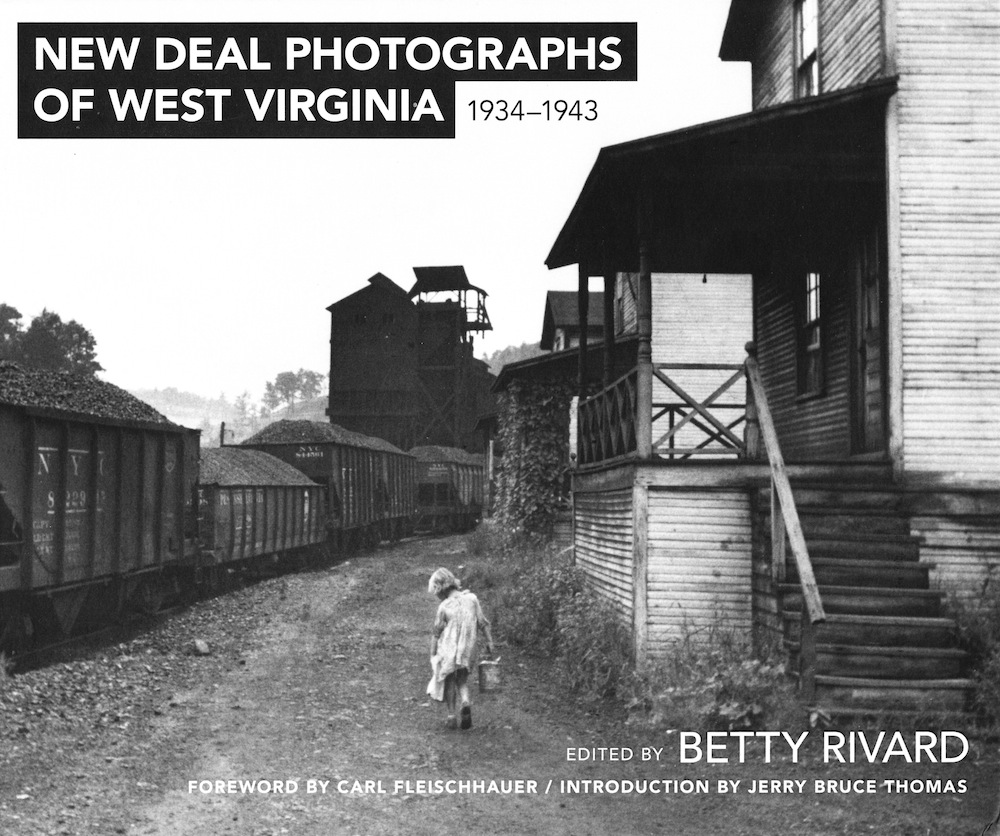
New Deal Photographs
Of West Virginia ---
1934 - 1943
Betty Rivard, Editor
(West Virginia University Press)

One of the unsung heroes of the New Deal era was Roy Stryker. He was director of the Farm Security Administration photographic unit. Starting in 1934, the FSA hired on photographers to document life in America. Despite congressional complaints "that the Roosevelt administration used the pictures in news releases and other publications to build political support, in effect, to support domestic propaganda," this book proves that the agenda adopted by the photographers were largely what they wanted, and Stryker's wisdom was to let them build their own craft, to create their own style.There were some excellent photographers, including Walker Evans, Dorothea Lange, Arthur Rothsteain, Ben Shahn and especially notable in this book --- Marion Post Wolcott. Despite their instructions to compile a representation of contemporary American life, these few chose not only to show happy faces with happy jobs living in a happy country, but also to show examples of the more painful world of the 30s: the jobless, the poor, the dirty, the dissident, the impoverished.
At least a quarter of the more than 150 photographs replicated here show workers on strike, kids in ratty clothes, desolate families ... joined with ironical takes ("You prosper when factories prosper.")
There are pictures of farm women trying to sell their goods in icy courthouse squares, children (dirty), with faces (dirty), on old bedsteads (dirty), in dreary (and dirty) rooms; and everywhere, men standing around, hands in pockets, eyes wary ... waiting, waiting, waiting. And the most touching of them all, smiling faces beaming through the windshield of a new car, in that famous billboard proclaiming WORLD'S HIGHEST STANDARD OF LIVING: "There's no way like the American Way." In this case, the set is juxtaposed with shabby frame houses on the hill in Kingwood, West Virginia.
The history of the FSA is well-capsulated here, with brief histories of Ted Johnson, Walker Evans, Arthur Rothstein and the others who participated. Stryker was first hired on by the Resettlement Administration to be in charge of the "visuals" for various New Deal agencies such as the Farm Security Administration and --- ultimately --- the Office of War Information. This latter was a propaganda arm to create appropriate patriotism during World War Two. Those pictures appearing at the tail-end of this book are the usual classical "doing a dirty job to save democracy" sort.
The photographs of most interest here are those put together by the more radical employees of the federal project. West Virginia was a natural for them. The unemployment figures in 1933, for instance, are astonishing: a full 25% or the national workforce out of a job, but in West Virginia, some counties showed an 80% unemployment rate. Coal mining represented a chronically depressed industry, and poverty in the mountain communities was endemic.
I found myself thinking as I looked through this that in this country now, in --- for instance --- some of these self-same West Virginia counties showing a continuing unemployment rate of 10-20%, there should be sufficient incentive to reinvent such gentle projects as the FSA --- with its photographers and writers projects ... and, most of all, special employment opportunities for the very poor unemployed and their families. There should be such a rebirth, but --- perish the thought that we should be so creative. And hopeful. And kindly.